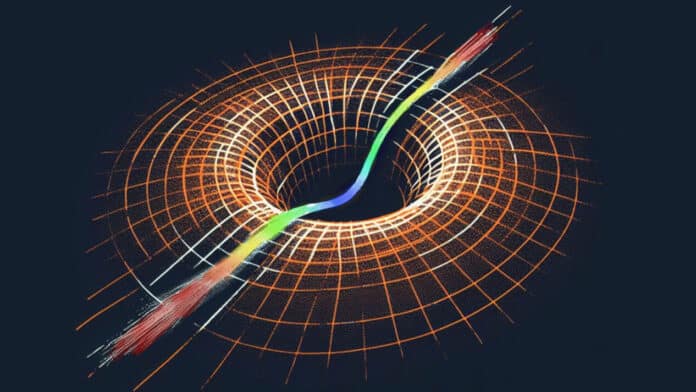Recently, there has been a resurgence of interest in time-varying media research, particularly in photonics. The concentrate has been exclusively on electromagnetic waves despite the significant amount of study done in this area in recent years; a complete framework defining how time-varying media influence wave phenomena, in general, has yet to be fully developed.
Researchers at Tampere University and the University of Eastern Finland have studied the implications of time-varying wave mechanics. They showed that how the standard wave equation is modified if the speed of a wave is not constant in time.
The standard wave equation is satisfied on both sides of an interface when light is incident on it. To solve such a problem analytically, one would first determine the wave’s appearance on either side of the contact and then use electromagnetic boundary conditions to connect the two. A piecewise continuous solution is what this is.
Nevertheless, the incident light must accelerate at the boundary. This still needs to be accounted for.
Assistant Professor Matias Koivurova from the University of Eastern Finland said, “Basically, I found an elegant way to derive the standard wave equation in 1+1 dimensions. The only assumption I needed was that the speed of the wave is constant. Then I thought to myself: what if it’s not always constant? This turned out to be an excellent question.”
The researchers formulated what they refer to as an accelerating wave equation by assuming that a wave’s speed might change over time. It was easy to write out the equation, but it was more challenging to solve.
The solution didn’t make sense. It only then occurred to researchers that its behavior resembles that of relativistic phenomena.
They required a constant reference speed, which they found in the vacuum speed of light, to produce solutions that behave as they should. The researchers said everything began to make sense the moment that was realized. Investigation of the formalism’s extensive effects came next.
In this study, scientists showed that there is a well-defined direction of time in terms of accelerating waves- called ‘arrow of time.’ This is because the accelerating wave equation only allows solutions where time flows forward, but never backward.
Nevertheless, entropy would start to decline if the direction of time were to change until the system reached its lowest entropy state. Entropy would then be free to grow once more.
This is the distinction between “macroscopic” and “microscopic” arrows of time: whereas entropy unequivocally establishes the direction of time for huge systems, nothing does so for single particles.
“Yet, we anticipate single particles to act in a manner consistent with having a fixed direction of time!” says Koivurova.
The accelerating wave equation is universal and accounts for all wave behavior worldwide because it can be derived from geometrical principles. Thus, the fixed direction of time must likewise be a rather fundamental characteristic of nature.
Another feature is the framework’s ability to be applied to the analytical modeling of waves that are continuous everywhere, including across interfaces. The conservation of energy and momentum is then affected in some significant ways by this.
There is a fairly well-known physics issue known as the Abraham-Minkowski controversy. The subject of debate is what happens to light’s momentum when it enters a medium. Scientists have demonstrated that the momentum of the wave does not change in any way. To put it another way, the wave’s momentum is conserved.
Relativistic effects are what make the conservation of momentum possible. Researchers discovered that we may assign the wave a “proper time” that is perfectly comparable to the proper time in the general theory of relativity. The researchers discovered that speeding waves also experience time dilation and length contraction because the wave encounters a time that differs from the laboratory time. The illusion that the wave’s momentum is not conserved inside a material medium is caused by length contraction.
In most cases, the new method is equal to the conventional formulation but contains an important addition: time-varying materials. Light will undergo abrupt and consistent changes in the material characteristics inside time-varying media. Such materials do not have waves that satisfy the fundamental wave equation.
The accelerating wave equation enters the picture at this point. Researchers can now model situations analytically that were previously only solvable numerically.
These circumstances involve a strange hypothetical substance, a disordered photonic time crystal. Recent theoretical studies have demonstrated that a wave moving through the material will exponentially slow down while gaining energy.
Associate Professor Marco Ornigotti from Tampere University said, “Our formalism shows that the observed change in the energy of the pulse is due to a curved space-time the pulse experiences. In such cases, energy conservation is locally violated.”
Journal Reference:
- Matias Koivurova, Charles W. Robson, and Marco Ornigotti. Time-varying media, relativity, and the arrow of time. Optica. DOI: 10.1364/OPTICA.494630
